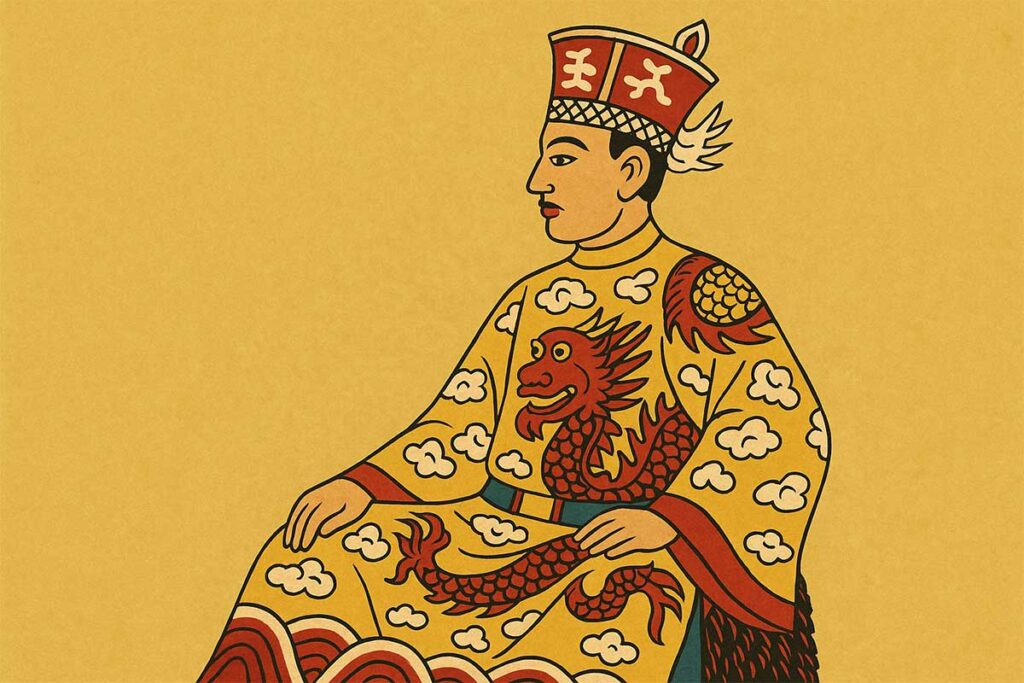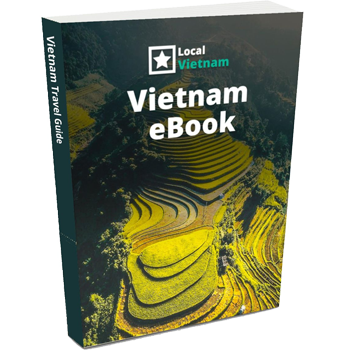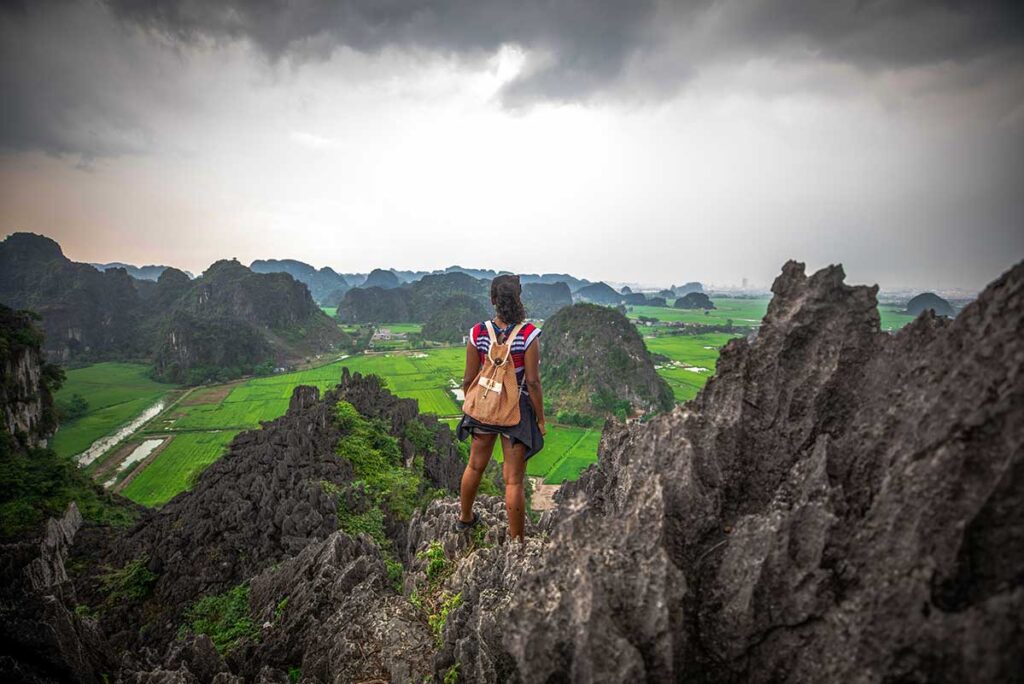Who was Minh Mang?
Emperor Minh Mang (1791–1841) was the fourth son of Emperor Gia Long, the founder of the Nguyen dynasty, and he ruled Vietnam from 1820 until his death in 1841. Although not the eldest, he was chosen as successor after disputes within the royal family, a decision that shaped the dynasty’s future.
His reign is remembered for strict adherence to Confucian principles, centralizing reforms that strengthened imperial authority, and a hardline stance against Western influence, particularly Christianity. At the same time, he expanded Vietnam’s territory through campaigns in Cambodia and conflict with Siam, leaving behind a legacy that was both ambitious and controversial. For travelers today, he stands out as one of the most influential Nguyen emperors, with his grand mausoleum near Hue being the clearest reminder of his rule.
Vietnam at the time of Emperor Minh Mang
When Minh Mang came to power in 1820, Vietnam was still adjusting to life under the newly established Nguyen dynasty. His father, Emperor Gia Long, had reunified the country after decades of civil war with the Tây Sơn, but that unity remained fragile. Local leaders and generals still held significant influence, especially in the south, and rebellions were a constant challenge to imperial authority.
The early 19th century also brought major strains from within. The first cholera pandemic hit Vietnam in 1820, killing large numbers of people and weakening the economy. Famines and natural disasters added to the unrest, and uprisings became frequent across the countryside. Maintaining order meant strengthening the central administration, but that often put the emperor at odds with local autonomy that had existed for generations.
Beyond Vietnam’s borders, the region was becoming more turbulent. Cambodia, long caught between its powerful neighbors, was under Nguyen influence but also a source of tension with Siam (modern-day Thailand). At the same time, European powers—especially France and Britain—were expanding their presence in Asia. Vietnam, with its long coastline and fertile lands, was of growing interest to foreign traders and missionaries, setting the stage for the conflicts that would intensify during Minh Mang’s reign.
Key events in Minh Mang’s life
Early life & Path to the throne
Minh Mang was born Nguyễn Phúc Đảm in 1791, during the turbulent years of the Tây Sơn wars. Though he was the fourth son of Gia Long, he was raised by Gia Long’s first wife, who had no surviving sons of her own. This unusual arrangement strengthened his position within the royal family. In 1816, Gia Long formally named him crown prince, a controversial decision that bypassed other potential heirs and created lasting tension within the court.
Accession to the throne (1820)
When Gia Long died in 1820, Minh Mang succeeded the throne at the age of 29. His early years as emperor were marked by political challenges, as powerful mandarins and southern leaders questioned his legitimacy. Consolidating power meant reining in regional autonomy, a move that immediately set him apart as a ruler determined to centralize authority.
Domestic reforms
Minh Mang reshaped the state along Confucian lines, with a strong emphasis on centralized governance. He reorganized administrative divisions, reduced the autonomy of regional governors, and expanded the imperial examination system to recruit mandarins based on merit. Land reform policies aimed to limit the power of wealthy landowners, while infrastructure projects such as roads, canals, and a postal system were developed to strengthen control and communication across the empire. These reforms helped solidify his authority, though they also created resentment among those who lost local power.
Foreign policy & isolation
On the international stage, Minh Mang followed a strict policy of isolation. He rejected trade proposals from France, Britain, and the United States, seeing Western influence as a threat to Vietnam’s Confucian order. While he was willing to purchase weapons and technical knowledge, he refused political or commercial concessions. This cautious approach kept Vietnam relatively closed to the outside world, but it also left the country more vulnerable when European colonial ambitions grew stronger later in the century.
Policy towards Christianity
Minh Mang viewed Christianity as incompatible with Confucian traditions, particularly the belief in loyalty to the emperor and the practice of ancestor worship. In 1825, he banned new missionaries from entering Vietnam and began to persecute Catholic priests and converts. Several foreign missionaries were executed during his reign, and Vietnamese Christians faced increasing repression. These policies, meant to protect imperial authority, later gave France a justification for military intervention under the pretext of defending religious freedom.
Military campaigns & Cambodia/Siam Wars
Minh Mang was also active in regional politics. He sought to secure Vietnam’s control over Cambodia, which often found itself caught between Vietnamese and Siamese influence. In the early 1830s, tensions with Siam led to open conflict, with battles fought in Cambodia and southern Vietnam. Though Vietnam managed to defend its territory, the war highlighted the constant pressure of balancing regional dominance with internal stability.
Rebellions & Challenges
Throughout his reign, Minh Mang faced widespread internal resistance. Southern leader Lê Văn Duyệt, once a powerful general under Gia Long, maintained near-autonomous control over Cochinchina. After Duyệt’s death in 1832, Minh Mang moved to dismantle his authority, triggering the Lê Văn Khôi rebellion in Saigon—a major uprising that lasted several years and drew support from both Christians and local elites. Beyond this, smaller revolts erupted across the empire, with some sources counting nearly 200 uprisings during his two decades on the throne.
Final years & Death (1841)
In his later years, Minh Mang remained committed to isolationist policies, even as foreign envoys from France and the United States tried to open relations. His final attempt at diplomacy—a small mission to Europe—failed to achieve recognition or agreements. In 1841, he fell ill and died at the age of 49. He was succeeded by his son, Emperor Thiệu Trị, who inherited both the achievements and the challenges left behind by his father’s reign.
Minh Mang in Vietnam today
Mausoleum of Emperor Minh Mang (Hue)
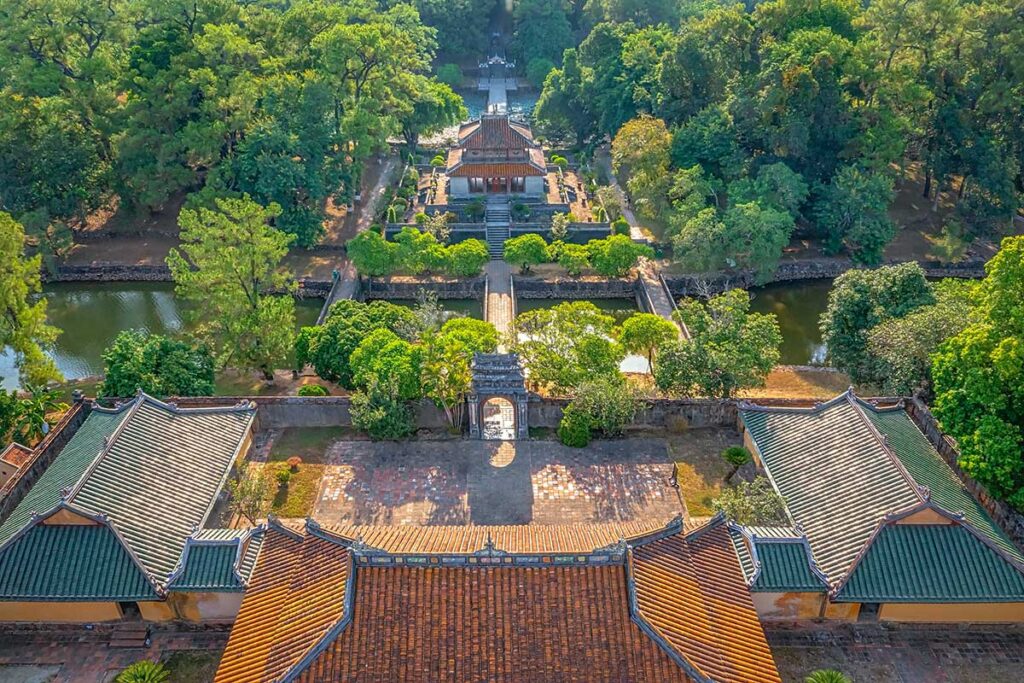
The most significant place linked today is the grand Minh Mang mausoleum, located about 12 km outside Hue. Built between 1840 and 1843, the complex sits on a quiet hillside surrounded by pine forests and lakes. Its design reflects his Confucian values—perfect symmetry, balance, and symbolism—more than the personal flair seen in later Nguyen tombs. Visitors can walk through multiple courtyards, pavilions, and stone bridges before reaching the burial mound, which is closed to the public but framed by serene gardens.
In terms of atmosphere, many travelers find it impressive for its scale and setting, though it can feel less personal compared to the more decorative tombs of Khai Dinh or Tu Duc. A typical visit takes about one to two hours, and it’s usually included on a “royal tombs tour” around Hue. Early mornings tend to be the most peaceful time to explore, before bus groups arrive.
Imperial City of Hue
While Gia Long started construction of the Imperial City in 1804, it was under Emperor Minh Mang that the complex was greatly expanded and consolidated into the heart of the Nguyen dynasty. He ordered the building of new palaces, gates, and ceremonial structures that shaped much of what travelers see today.
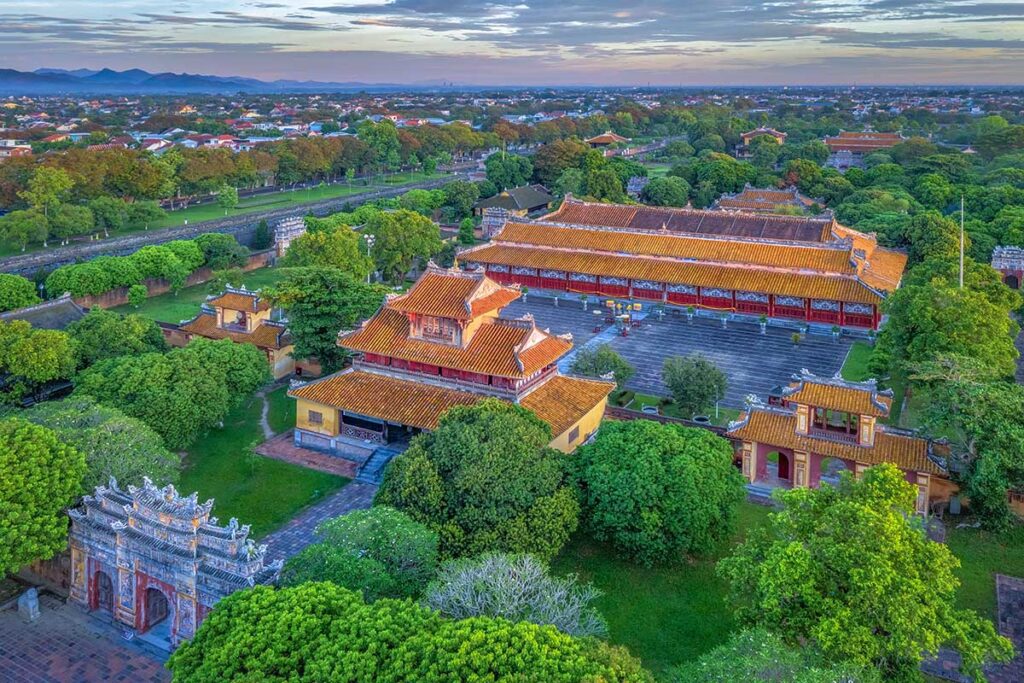
One of the most important additions was The Mieu Temple (Thế Miếu), built in 1821 to worship his father Gia Long, the dynasty’s founder. Over time, altars for other Nguyen emperors were added, including Minh Mang himself. For visitors, this makes the Imperial City not just a beautiful UNESCO site, but also one of the key places where Minh Mang’s legacy is still honored.
Monuments & Memorials
Beyond his tomb, Minh Mang’s name appears in various ways across Vietnam. Schools, streets, and local institutions often bear his name, especially in central Vietnam where Nguyen history is strongest. In Hue, you may also find statues and commemorative plaques that honor him as part of the dynasty’s imperial legacy.
Museums & Historical exhibitions
Minh Mang is featured in several museums that cover Vietnamese history. In Hanoi, the National Museum of History presents his reign as part of the Nguyen dynasty’s story, highlighting his reforms and strict Confucian policies. In Hue, within the Imperial City, you can find references to him in exhibitions about the Nguyen emperors, including artifacts and records from his reign. These displays don’t always stand out on their own, but they help give context when paired with a visit to his mausoleum.
Festivals & Cultural references
Unlike emperors such as Gia Long (dynasty founder) or Tu Duc (remembered for his romantic legacy), Minh Mang does not have major festivals dedicated solely to him. However, he is sometimes included in broader cultural or commemorative events in Hue, especially those linked to the Nguyen dynasty.
Education & Public Legacy
Minh Mang’s name lives on in schools, streets, and academic study across Vietnam. He is taught as a major Nguyen emperor, remembered both for his reforms and his controversial religious policies. For travelers, this shows how he remains part of Vietnam’s collective memory, even if his reputation is complex.
Other famous Emperors of Vietnam
Minh Mang was one of the most influential Nguyen rulers, but he is far from the only figure who left a deep mark on Vietnam’s history. These are some of the other emperors — and one prince turned national hero — who shaped the country in important ways:
- Lý Thái Tổ (r. 1009–1028) – Founder of the Lý dynasty, best remembered for moving the capital to Thăng Long (modern Hanoi), which became the country’s political and cultural center.
- Trần Hưng Đạo (1228–1300) – Not an emperor but a prince and brilliant general, celebrated as a national hero for leading Đại Việt to victory against multiple Mongol invasions.
- Lê Lợi (r. 1428–1433) – Leader of the Lam Sơn uprising against Ming China and founder of the Later Lê dynasty, which went on to rule for centuries.
- Gia Long (r. 1802–1820) – Founder of the Nguyen dynasty and father of Minh Mang, known for unifying Vietnam after decades of civil war.
- Tự Đức (r. 1847–1883) – The last emperor to hold real political power, remembered for his resistance to French incursions and for leaving behind an elaborate tomb near Hue.
- Bảo Đại (r. 1926–1945) – The last emperor of Vietnam, who abdicated in 1945 during the August Revolution, marking the end of the monarchy.
